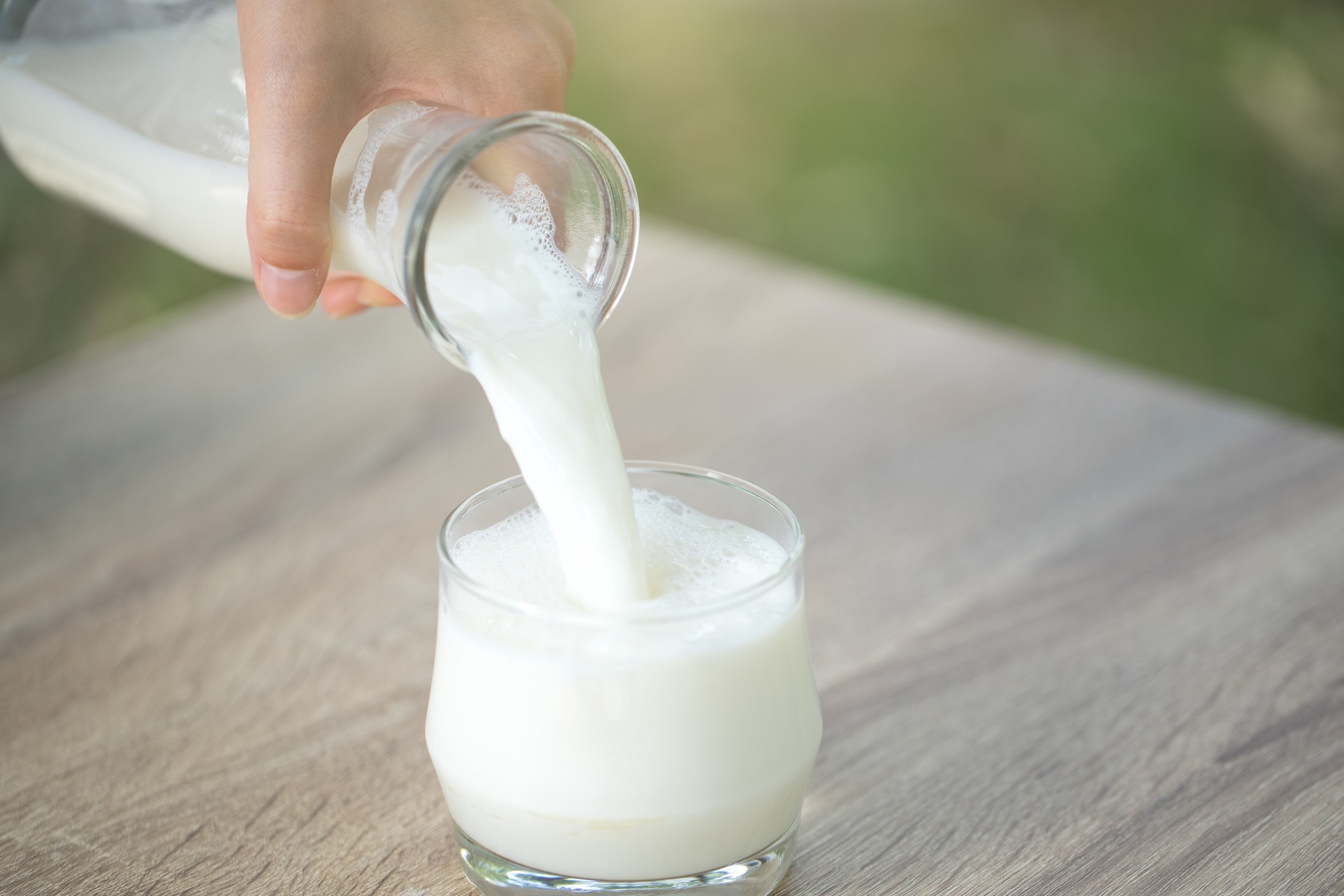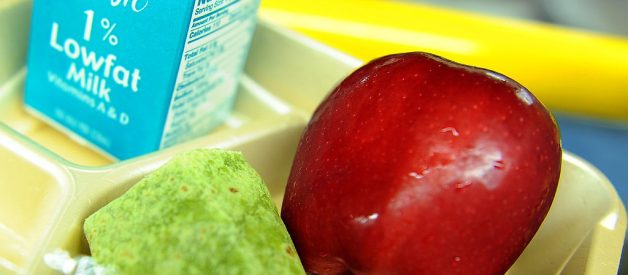The debate is alive and well in medical circles and beyond
 Photos by Jonathan Newton for The Washington Post via Getty Images
Photos by Jonathan Newton for The Washington Post via Getty Images
The Dietary Guidelines for Americans are the U.S. government?s formal nutrition policies, and they?ve long recommended that people consume fat-free or low-fat dairy. Likewise, the rules governing America?s public-school lunch programs prohibit schools from serving kids 2% or whole milk; only 1% and nonfat milk are allowed (although a bill now in Congress, if passed, would remove these milk restrictions).
The long-standing government promotion of low-fat milk makes sense for those who subscribe to the ?fat is fattening? logic that dominated popular diet strategies during the 1980s, 1990s, and 2000s. Milk fat is certainly energy-dense: According to the U.S. Department of Agriculture?s nutrition database, a cup of whole milk contains 63 more calories than a cup of skim. Milk fat is also a source of saturated fatty acids, which have been linked to elevated levels of LDL cholesterol ? a risk factor for heart disease. Promoting low-fat milk seems like a good way to lower people?s risks for weight gain and heart disease.
?All the arguments that have been made against dairy fat are, theoretically, quite plausible,? says Mario Kratz, a nutrition and disease researcher at the University of Washington and Seattle?s Fred Hutchinson Cancer Research Center. ?But when you ask me if the current evidence supports the recommendation to consume low-fat dairy, the answer clearly is no.?
In a 2013 research review, Kratz and colleagues found that people who consume the most full-fat dairy experience lower rates of obesity and cardiovascular disease than those consuming fewer full-fat dairy foods. The following year, he coauthored a study in The American Journal of Clinical Nutrition that found dairy fat consumption is linked to both improved glucose tolerance and lower levels of liver fat.
?Dairy fat is the most complex fat that humans eat,? Kratz says. ?It contains 400 or so different fatty acids, and the biological activity of many of those is not fully understood.?
He highlights one, butyric acid, which is a short-chain fatty acid that bacteria in the human colon produce when breaking down some forms of fiber. Research on butyric acid suggests it is essential to gut health, and maybe also protective against neurological disorders such as Alzheimer?s disease. It?s not clear that the butyric acid in whole milk confers all these benefits. ?But it stands to reason that eating foods rich in butyric acid, such as dairy fat, could have some positive health effects,? Kratz says. ?And there are a whole bunch of other fatty acids [in milk fat] that may also have beneficial effects.?
Others agree that dairy fat has been the subject of some unhelpful and myopic criticisms. ?The focus on low-fat [dairy] is predominantly based on the presumed harms of a single macronutrient category ? saturated fatty acids ? on a single cardiovascular risk marker,? says Mahshid Dehghan, an investigator with Canada?s Population Health Research Institute.
 krisanapong detraphiphat for Getty Images
krisanapong detraphiphat for Getty Images
In a 2018 study published in The Lancet, Dehghan and her colleagues found that, worldwide, people who consume dairy products enjoy lower mortality and cardiovascular disease risks than people who do not.
?Dairy products contain a range of potentially beneficial compounds, including specific amino acids, medium-chain and odd-chain saturated fats, milk fat globule phospholipids, unsaturated and branched-chain fats, natural trans fats, vitamin K1 and K2, and calcium,? Dehghan says. Fixating on saturated fat and LDL cholesterol obscures the true health profile of dairy, she says.
There?s also evidence that dairy fat is filling, which may help explain why people who drink whole milk aren?t at increased risk for weight gain compared to people who drink low-fat milk. ?Our research has shown that when people drink more low-fat dairy products, over months to years they unconsciously compensate for the lower calories by eating more carbohydrates, especially refined starch and sugar,? says Dr. Dariush Mozaffarian, a professor of nutrition and medicine at the Tufts University Friedman School of Nutrition Science and Policy. Trading dairy fat for refined carbs is not a healthy swap, he says.
But while the science to date suggests dumping skim or low-fat milk for full fat may be a beneficial trade, experts say people shouldn?t mistake whole milk for some kind of superfood. Mozaffarian says milk?s health profile is ?relatively neutral,? meaning it?s associated with both positives and negatives. And a 2016 study in the The American Journal of Clinical Nutrition found that replacing dairy fat with polyunsaturated fatty acids like those found in olive oil and other plant oils led to better health outcomes. Meanwhile, there?s evidence that drinking milk can increase the blood?s levels of growth hormones linked to heightened cancer risks. More research has found that conventional milk, but not organic, may contain residues of pesticides and antibiotics that could cause health problems.
While milk and other dairy products are almost certainly healthier than the heavily processed, refined-grain goodies that suffuse the average American?s meals, milk and dairy aren?t required components of a healthy diet. ?People don?t need to consume dairy foods,? Kratz says. ?You can eat a very healthy diet that is totally free of dairy products.?
Even though his research suggests whole-fat milk is healthier than low-fat, he says he?s not willing to crown a champ.
?I think we?ve made the mistake in the past of over-interpreting and making recommendations based on weak evidence,? he says. ?I feel like the argument to stay away from full-fat dairy is weak, but I don?t think we know enough to tell people to switch [to full-fat].? He also says the current fad of adding butter or cream to everything is a risky proposition. ?Some people think there?s something magical about dairy fat and they need to eat it by the spoonful, but based on the studies I?ve seen, I would not recommend that,? he says.
Mozaffarian reiterates some of these same points. ?Unless further research shows a definitive difference, the choice between low-fat versus whole-fat dairy can be based on personal preference,? he says.
Whole-milk lovers don?t have to choke down skim or 1%. And if a person?s diet is filled with unhealthy refined carbs and sugary beverages, eating or drinking full-fat dairy may help them cut back on those junk foods. But the nutritional science on milk ? both whole and low-fat ? is incomplete.
Markham Heid, a reporter and writer, is a long-time contributor at TIME, Men?s Health, Food & Wine, and other outlets. He has received reporting awards from the Society of Professional Journalists and the Maryland, Delaware, and D.C. Press Association.


